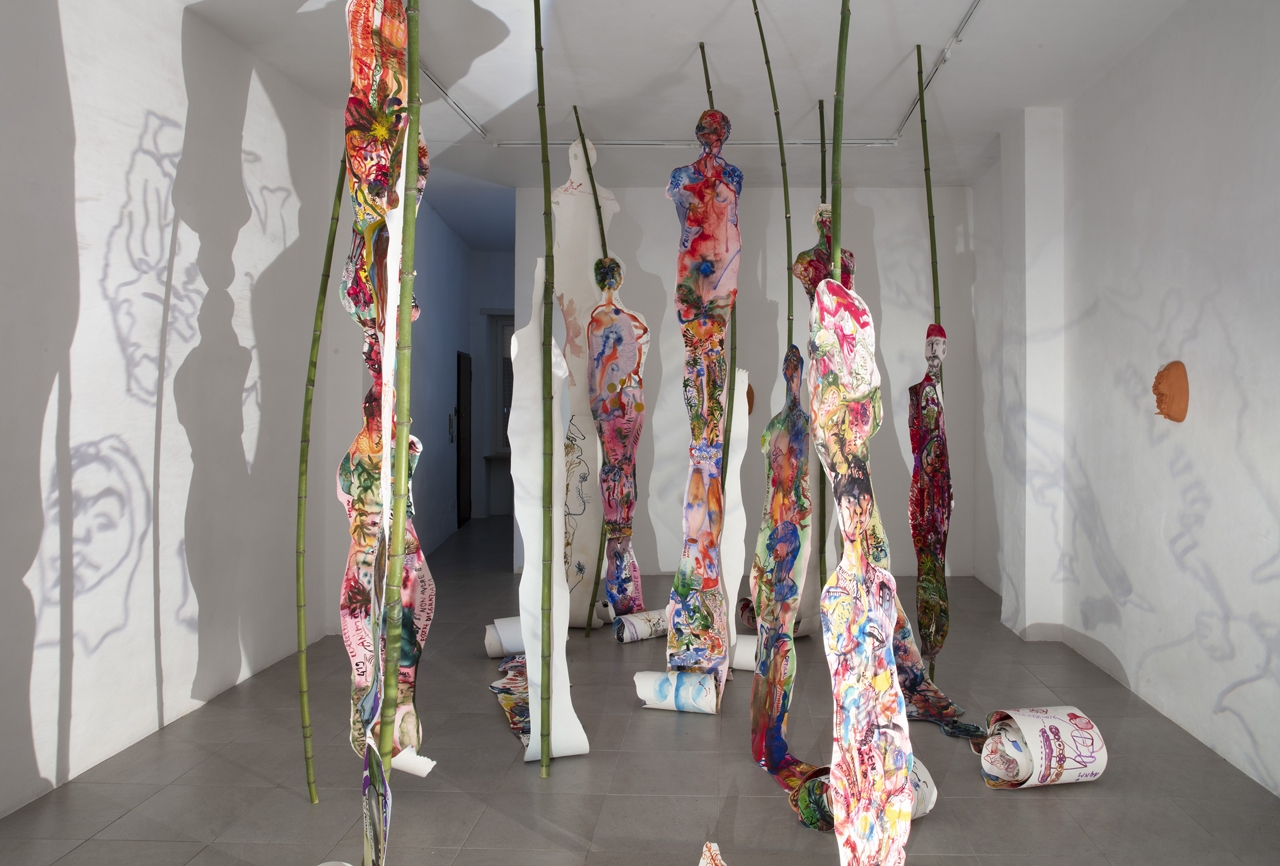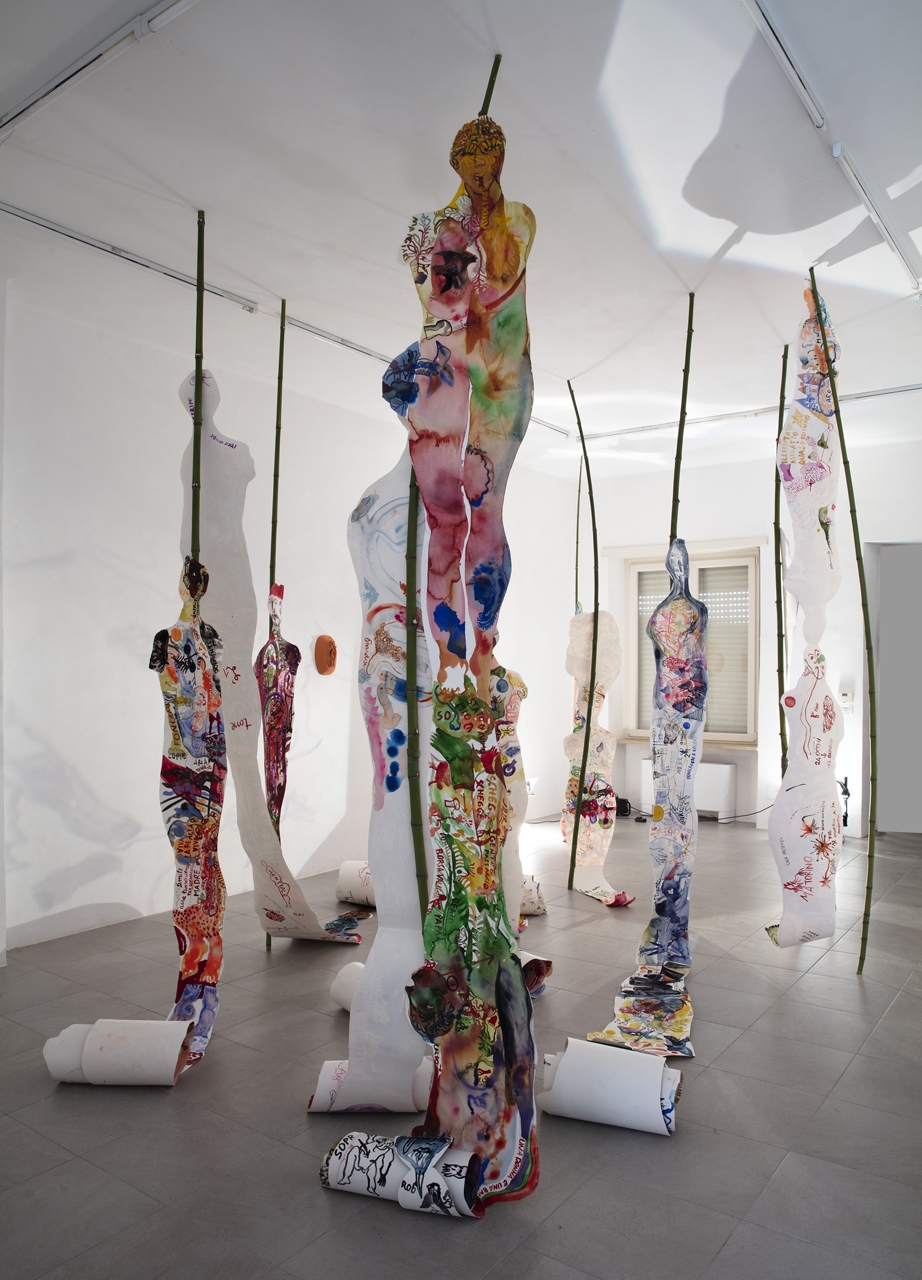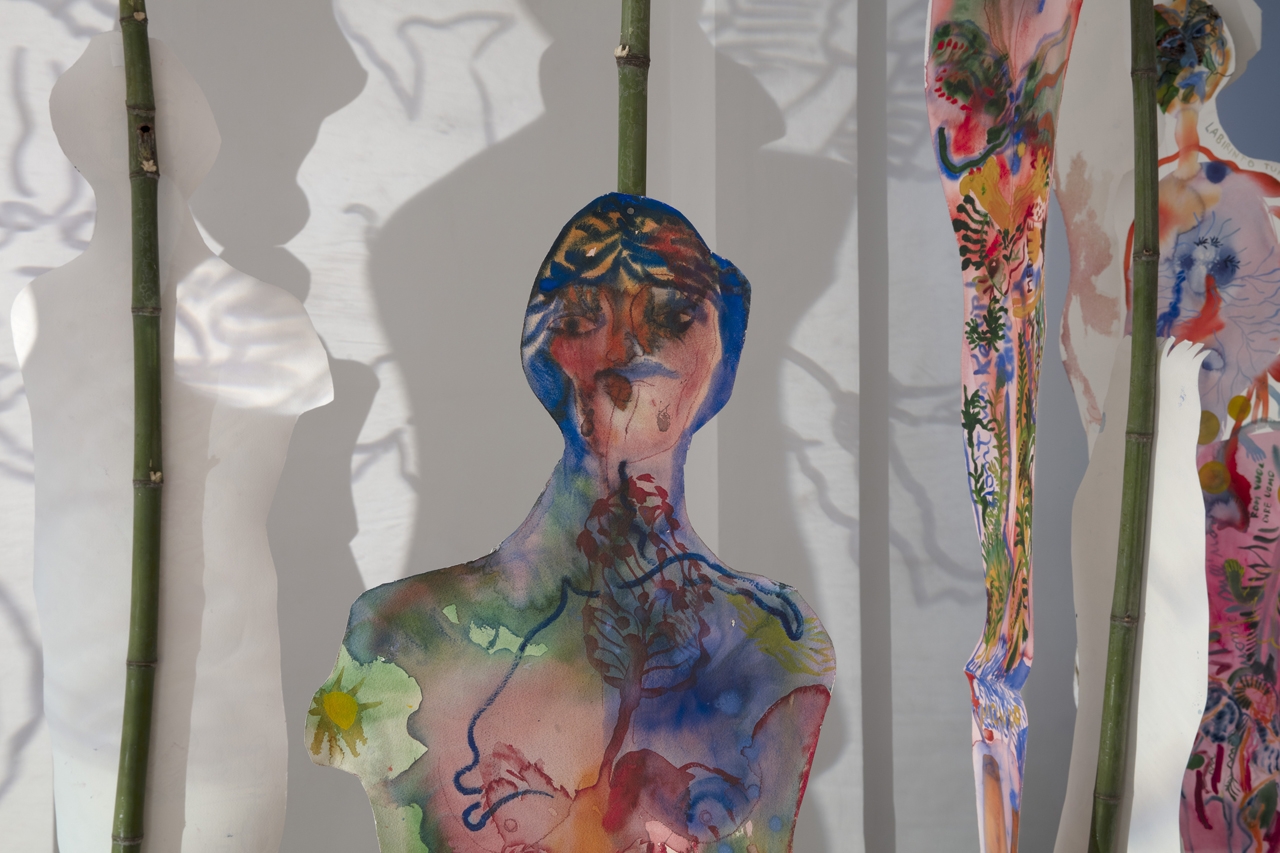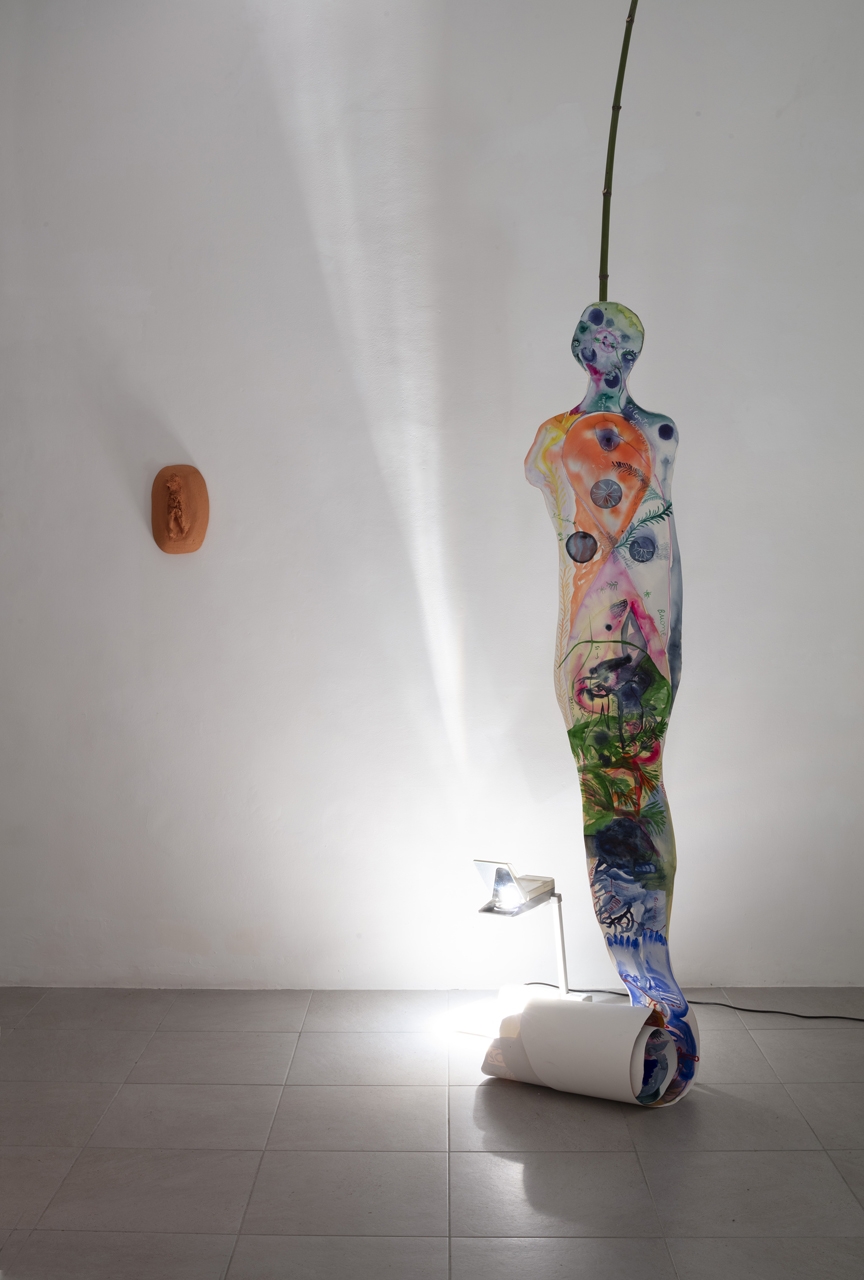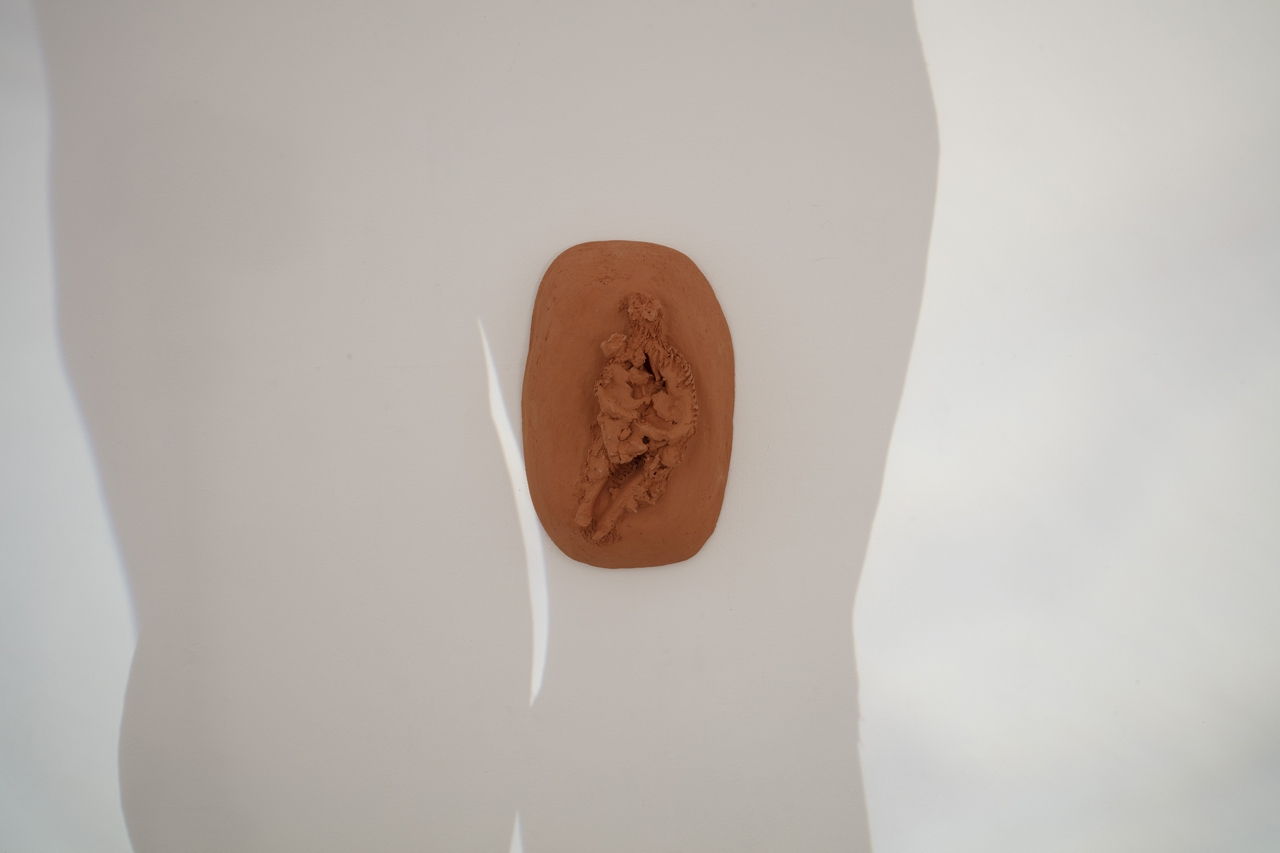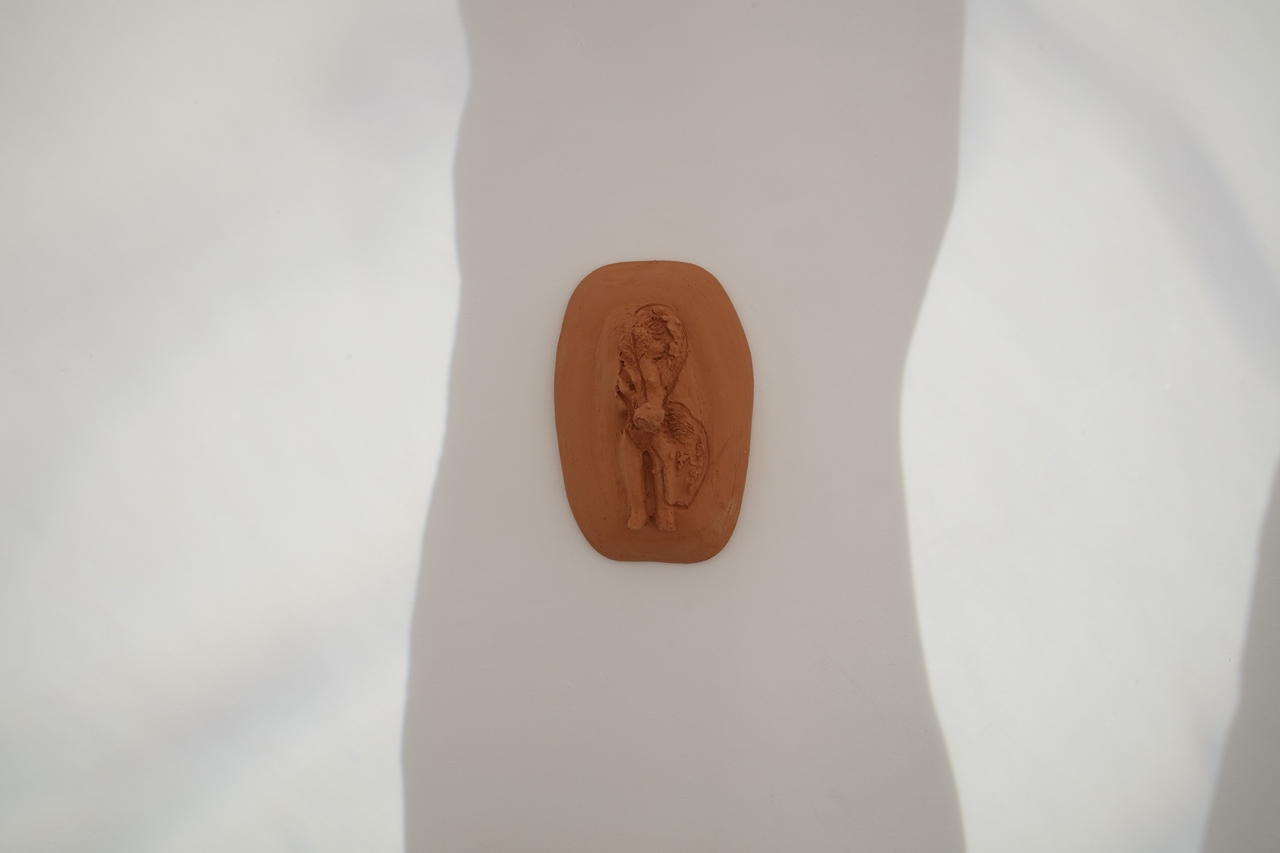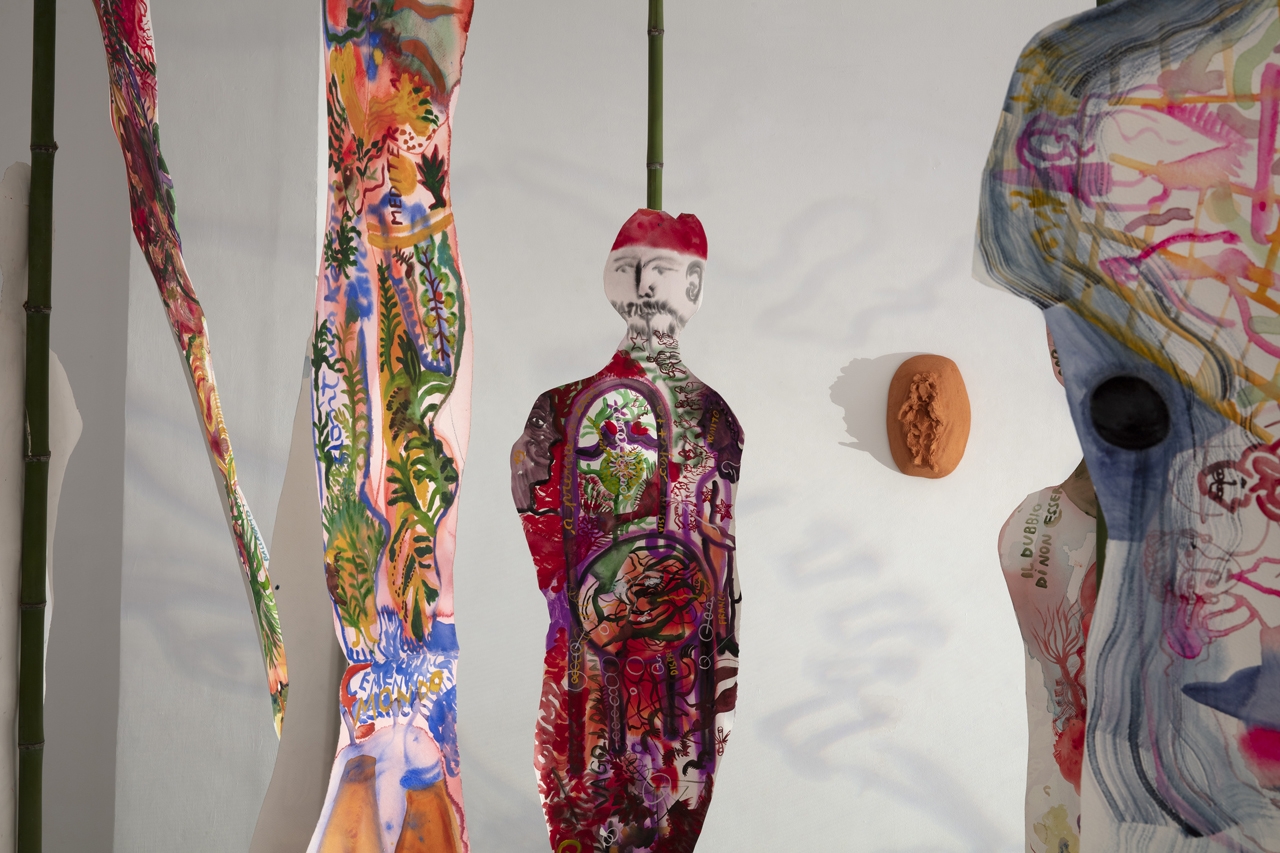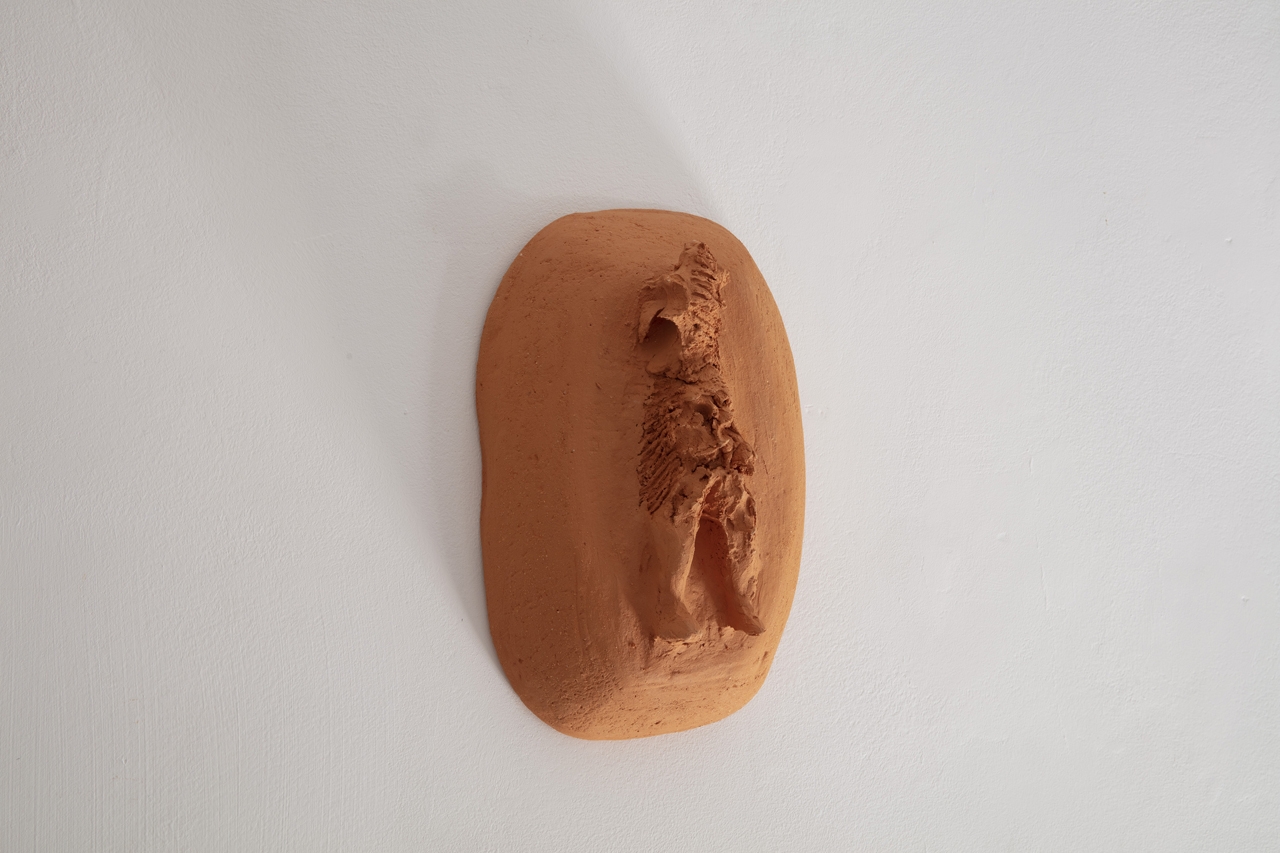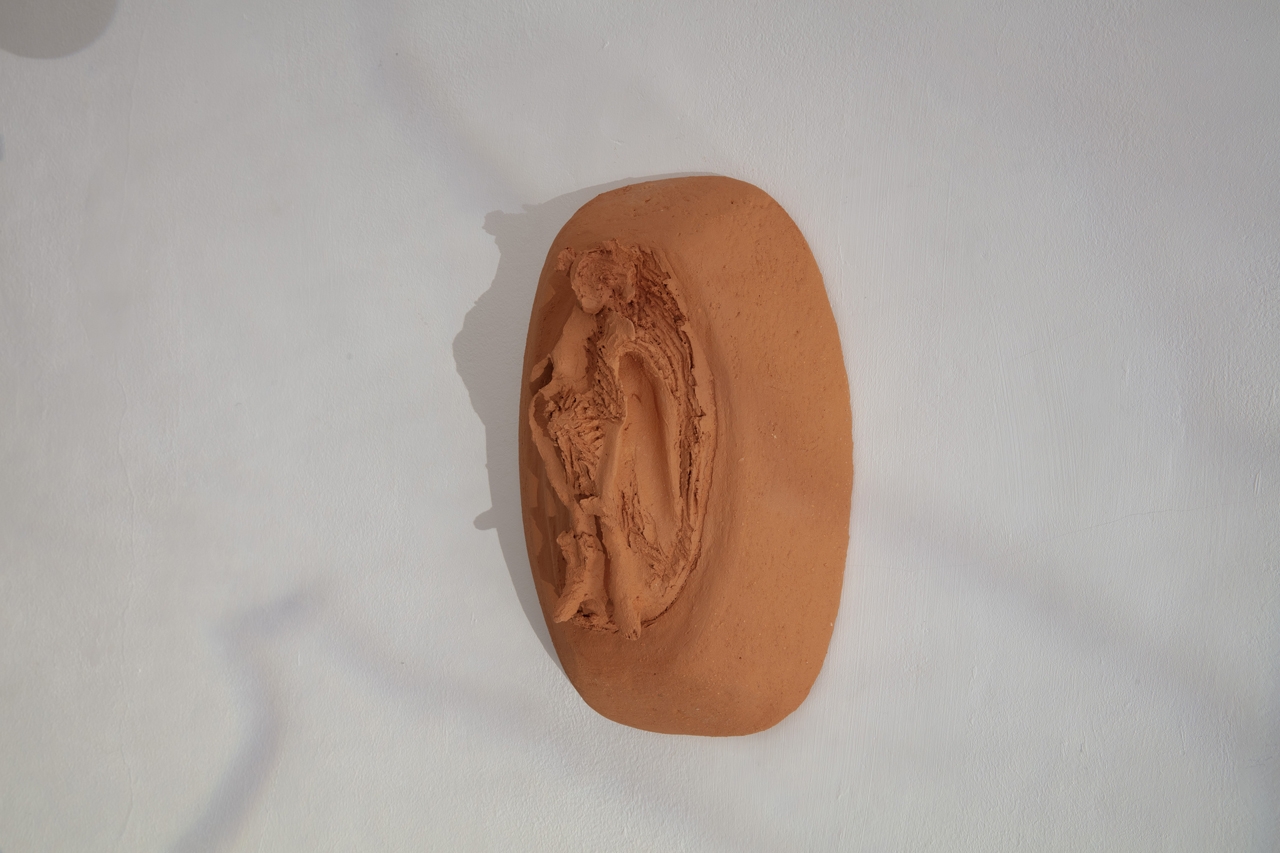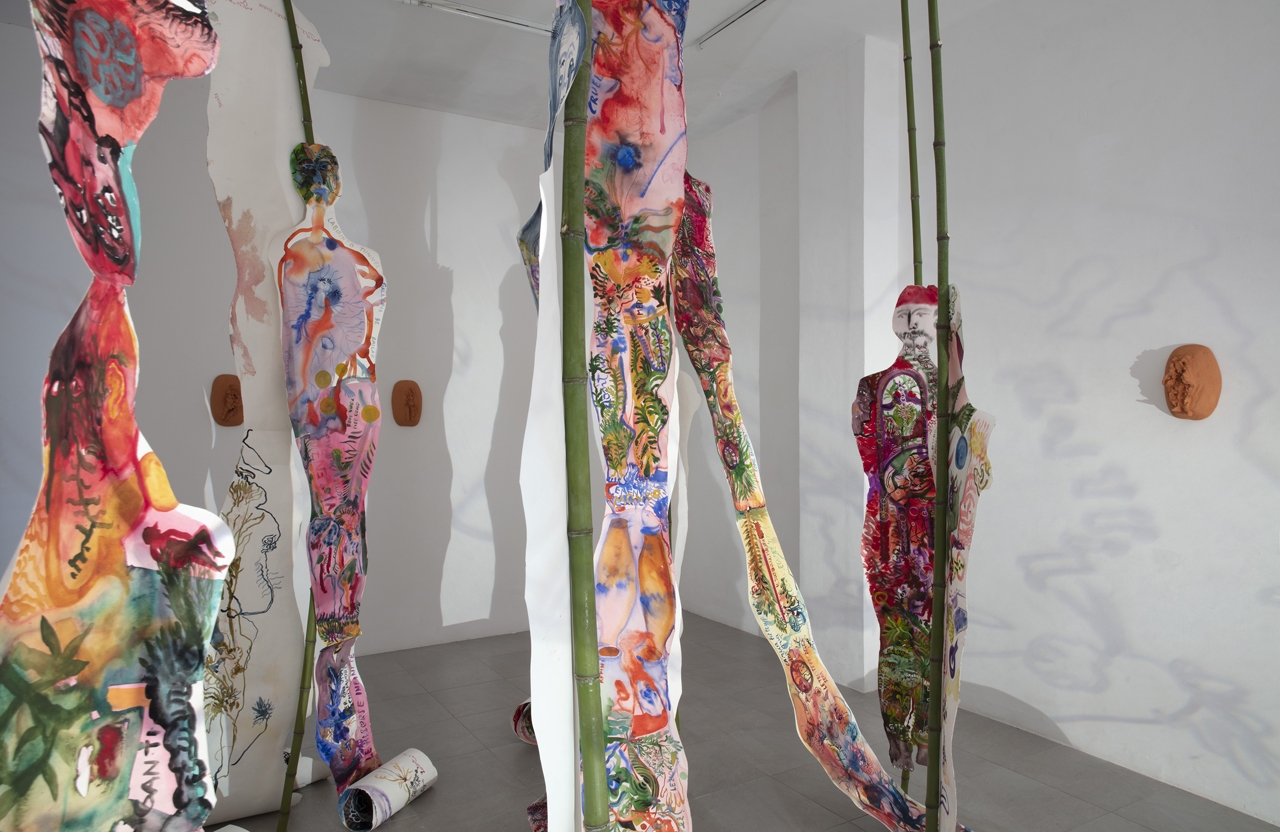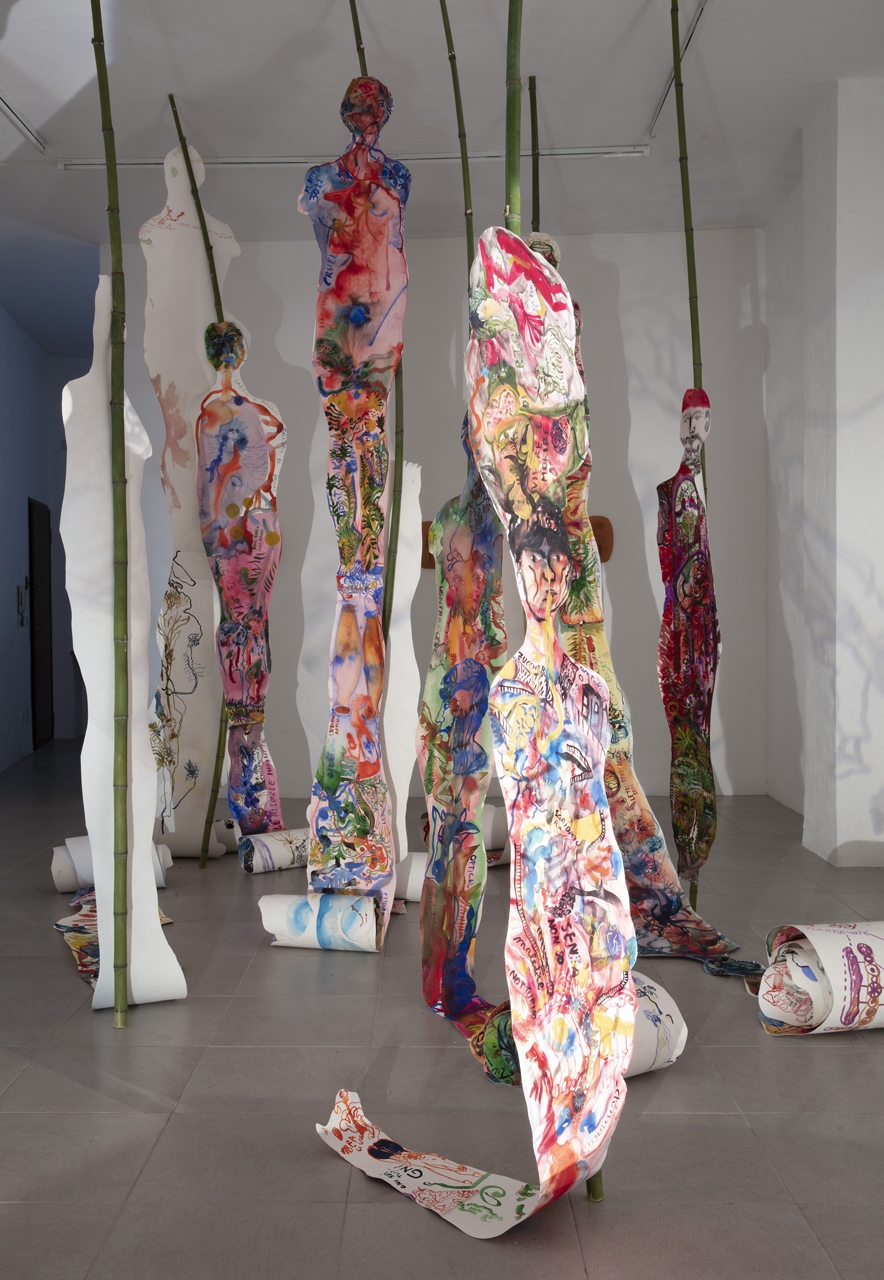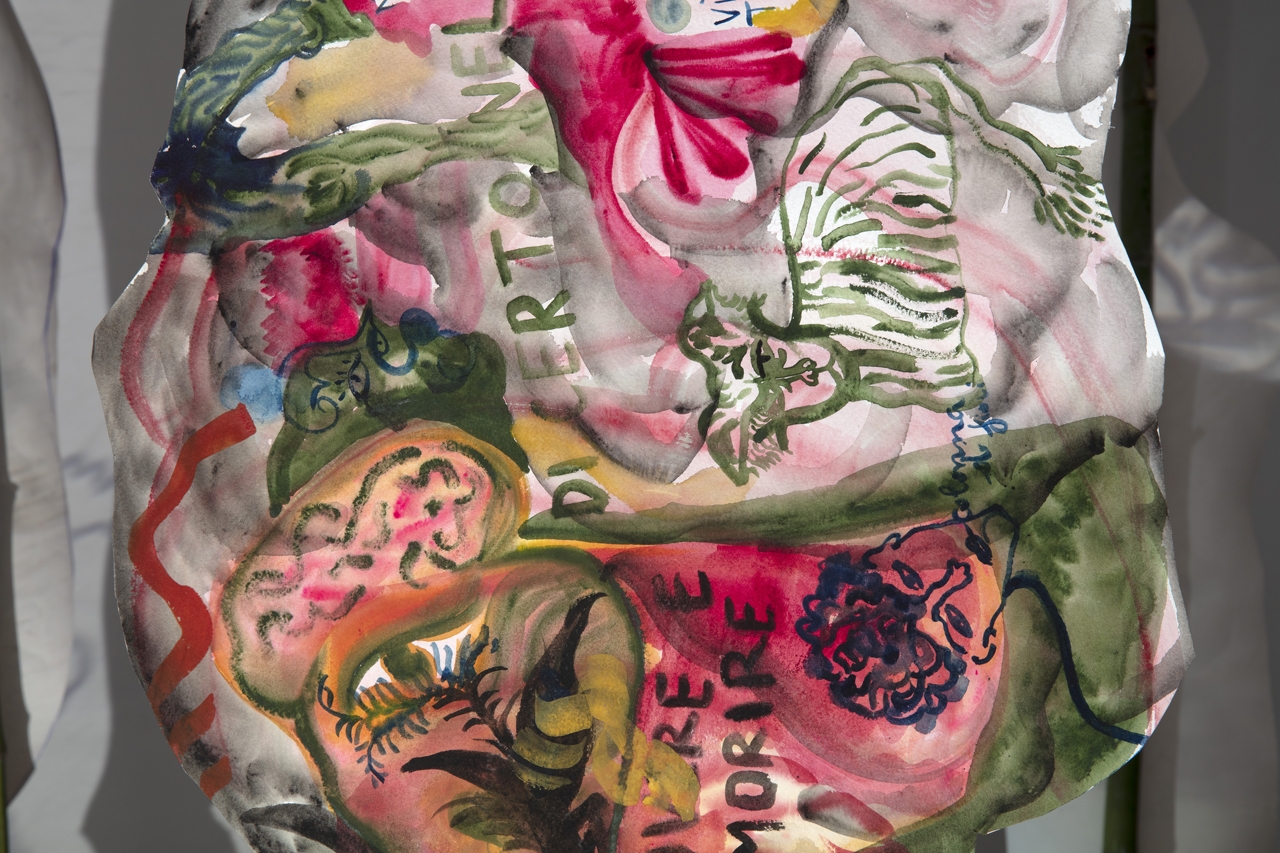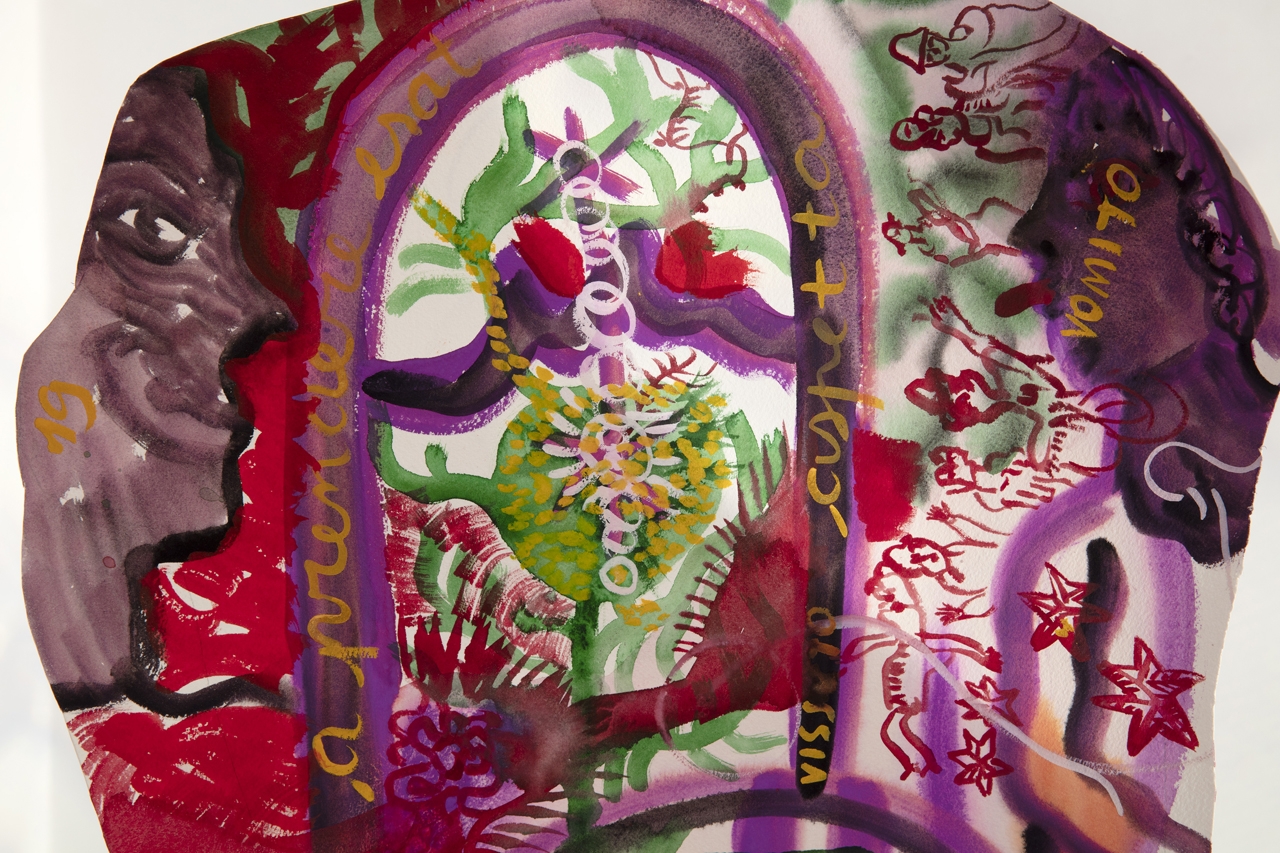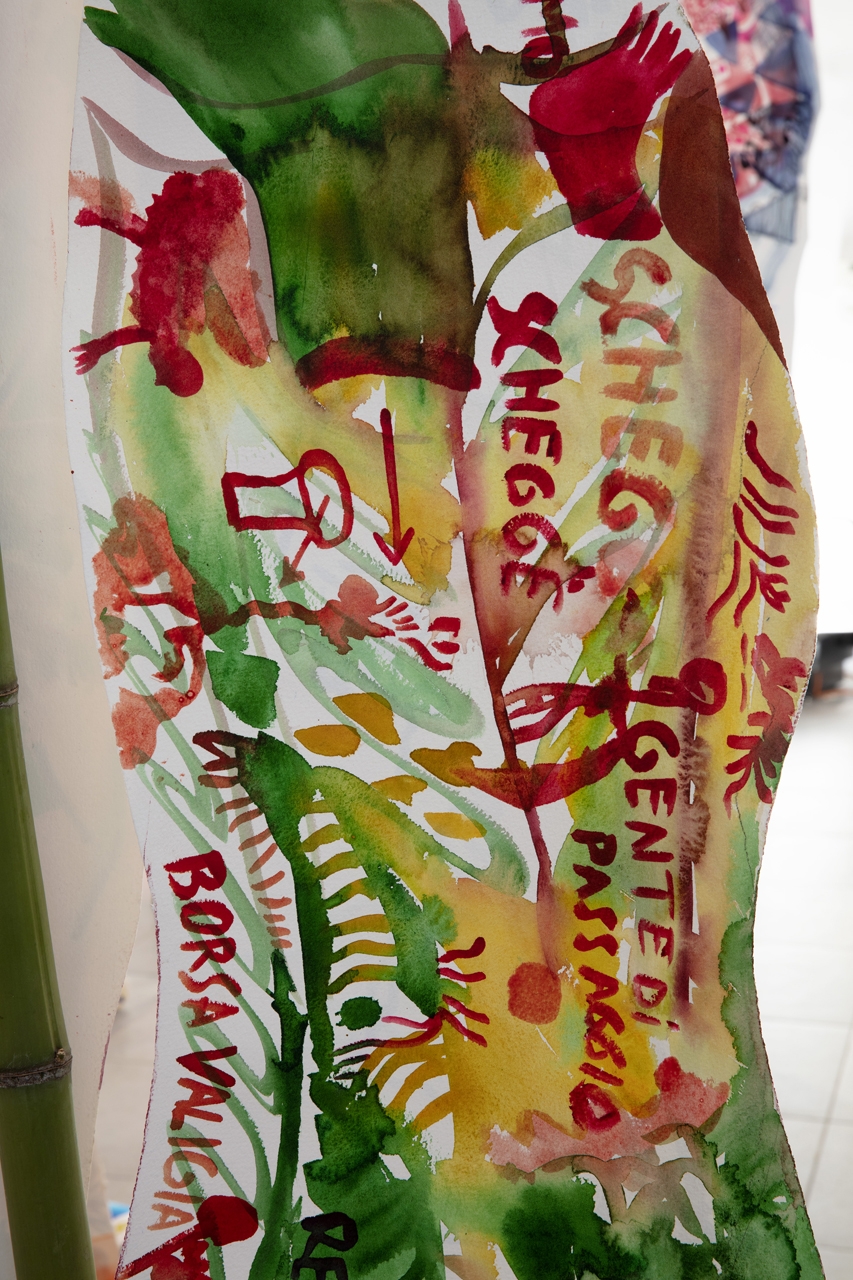Alice Visentin
Malefate19 March—30 April 2022
Opening: 18 March, 6pm
Almanac Inn presenta Malefate, la prima mostra personale di Alice Visentin a Torino.
La ricerca di Alice Visentin indaga il potere immaginifico dell'oralità e del racconto soffermandosi su storie, canti e rituali che congiungono passato e presente. Il passaggio della parola da corpo a corpo, da soggetto a soggetto, riflette archetipi, memorie, tradizioni - collettive e personali - che tessono una trama complessa, densa ed universale.
La pittura è usata per tracciare e intrecciare immagini che provengono da storie arcane, delle origini o provenienti dalla quotidianità più semplice, silenziosa ed autentica di una chiacchiera o un racconto. Questa raccolta di immagini vuole seguire il flusso del vivere e dar voce ad una molteplicità di soggetti, per avvicinarsi alla complessità del mondo da prospettive ed esperienze singolari, anche ai margini, facendone risuonare le parole.
Il luogo di queste immagini è il corpo: non solo per la necessaria presenza di un interlocutore affinché le nostre parole assumano significato, ma anche come origine e filtro. Non a caso, sono proprio sagome del corpo di Alice che accolgono le storie da lei raccolte e interpretate. Questi supporti di carta dalle forme ripetute, ma dalle linee sempre diverse, sembrano volerci ricordare l'unicità e la singolarità soggiacente ad ogni collettività.
Le voci e storie di donne sono assunte come fonte prediletta, in quanto “in molte parti del mondo, le donne sono state viste storicamente come tessitrici della memoria - quelle che mantengono in vita le voci del passato e le storie delle comunità, e che le trasmettono alle generazioni future creando un’identità collettiva e un profondo senso di coesione. Sono anche le depositarie delle conoscenze acquisite e della saggezza riguardo ai rimedi medici, ai problemi sentimentali e alla comprensione del comportamento umano, a partire da quello degli uomini.” (1)
Le storie si intrecciano in una foresta di corpi e narrazioni che si sovrappongono, si uniscono e continuano in altri profili e nuove configurazioni proiettate sulle pareti con un gioco di luci e ombre.
Ad aspettarle, fisse come icone religiose o semplici padelle di rame appese in cucina, dei cocci di terracotta, dei coperchi di pirofile: sono le malefate del titolo della mostra. Si diceva che le malefate fossero delle piccole figure femminili che bisbigliavano i destini ai bambini appena nati decretandone il fato nel bene o nel male, amavano vestirsi di rosso e, su telai d’oro, tessevano splendide stoffe che stendevano sui prati al chiaro di luna. Queste presenze sembrano apparire dalla terracotta, ricordandoci altri miti femminili delle origini sull’inevitabile coesistenza tra bene e male. Anche in questo caso, come per la curiosa Pandora, i contenitori sono aperti. Restano solo i coperchi. L’intreccio di storie che ne è uscito ha ormai animato la stanza.
Per le malefate la parola è il mezzo per tessere il destino addosso ad una persona; bisbigliando la sua storia ne determina il futuro, creando il percorso che lo guiderà nella vita. Non a caso in piemontese la ‘desmentioura’ è la donna che pratica la ‘smentía’, il rito magico. La parola deriva da ‘desmetié’, dimenticare. Quando la fattura è fatta, la traccia delle narrazione si è persa, dimenticata.
Il filo della storia e del tempo torna anche nella figura delle Moire dell’antica grecia: altre figure femminili abili tessitrici e figlie della notte che hanno il compito di tessere il fato di ognuno, svolgerlo ed infine reciderlo segnandone la fine.
Questo ruolo ricorrente della parola e del filo narrativo affidato a figure femminili che lo intrecciano e determinano la complessità della condizione umana è ciò che ricerca Alice in Malefate.
“Un filo magico parve allacciare le donne dando loro un’eccitazione composta e ardente. La fila si cominciò a piegare, formando lentamente un circolo: di tanto in tanto una donna s’avanzava, staccava due mani unite, le intrecciava alle sue, accresceva la ghirlanda nera e rossa dietro cui si muoveva la frangia delle ombre. E i piedi si sollevavano sempre più svelti, battendo gli uni sugli altri, percuotendo la terra come per svegliarla dalla sua immobilità.” (2)
(1) Silvia Federici, Caccia alle streghe, guerra alle donne.
(2) Grazia Deledda, Canne al vento.
Finissage: 30 Aprile, h.19 - listening session di Oh! Uomo di Andrea Penso.
Almanac Inn è sostenuto da Fondazione CRT e Fondazione Compagnia di San Paolo.

Almanac Inn presents Malefate, the first solo exhibition in Turin by Alice Visentin.
Alice Visentin's research investigates the imaginative power of orality and storytelling, exploring stories, songs and rituals that unite past and present. The passage of the word from body to body, from subject to subject, reflects archetypes, memories, traditions - collective and personal - which weave a complex, dense and universal plot.
Painting is used to trace and intertwine images that come from arcane stories, from the origins or from a simple, more silent and authentic everyday life chat or story.
This collection of images wants to follow the flow of life and give voice to a multiplicity of subjects, to approach the complexity of the world from singular perspectives and experiences, even at the margins, making their words resonate.
The place of these images is the body: not only for the necessary presence of an interlocutor so that our words would take on meaning, but also as origin and filter. Not surprisingly, the silhouettes that host the stories that Alice collected and interpreted are shaped from her own body. These paper supports with repeated forms, but with always different lines, remind us of the uniqueness and singularity underlying each collectivity.
Voices and stories of women are taken as main source, as “women have been seen historically, in many parts of the world, as the weavers of memory - those who keep alive the voices of the past, the histories of the communities, who transmit them to the future generations and, in so doing, create a collective identity and profound sense of cohesion. They are also the repositories of acquired knowledge and wisdom regarding medical remedies, sentimental problems and the understanding of human behavior, starting with that of men.” (1)
The stories intertwine in a forest of bodies and narratives that overlap, join and continue in other profiles and new configurations projected on the walls with a play of light and shadow.
Waiting for them, fixed as religious icons or simple copper pans hung in the kitchen, there are a series of earthenware lids: they are the “malefate” of the exhibition title.
It was said that the malefate were small female figures who whispered the destinies to newborn children appointing their fate for better or for worse. They loved to dress in red and, on gold looms, wove splendid fabrics that they spread on the fields in the moonlight. These presences seem to appear from the terracotta, reminding us of other female myths of the origins that address the inevitable coexistence of good and evil. Also in this case, as for the curious Pandora, the containers are open. Only the lids remain. The intertwining stories that emerged have now animated the room.
For the malefate the spoken word is the means to weave a destiny on a person; whispering their story determines their future, drawing the path that will guide them in life. It is no coincidence that in Piedmontese the ‘desmentioura’ is the woman who practices the ‘smentía’, the magical ritual. The word comes from 'desmetié', to forget. When the spell is done, the trace of the narration is lost, forgotten.
The thread of history and time also comes back in the characters of the Moirai of ancient Greece: other skilled female weavers and daughters of the night who have the task of weaving everyone's fate, unfolding it and finally cutting it off, marking its end.
This recurring role of the word and of the narrative thread entrusted to female figures who intertwine it and determine the complexity of the human condition is what Alice researches in Malefate.
“A magical thread seemed to tie the women, giving them a composed and ardent excitement. The row began to bend, slowly forming a circle: from time to time a woman advanced, detached two joined hands, intertwined them with hers, increased the black and red garland behind which the fringe of shadows moved. And the feet rose faster and faster, beating over each other, beating the earth as if to awaken it from its stillness." (2)
(1) Silvia Federici, Witches, Witch-Hunting and Women
(2) Grazia Deledda, Canne al vento
Finissage: 30 Aprile, h.19 - listening session of Oh! Uomo by Andrea Penso.
Almanac Inn is supported by Fondazione CRT and Fondazione Compagnia di San Paolo.

